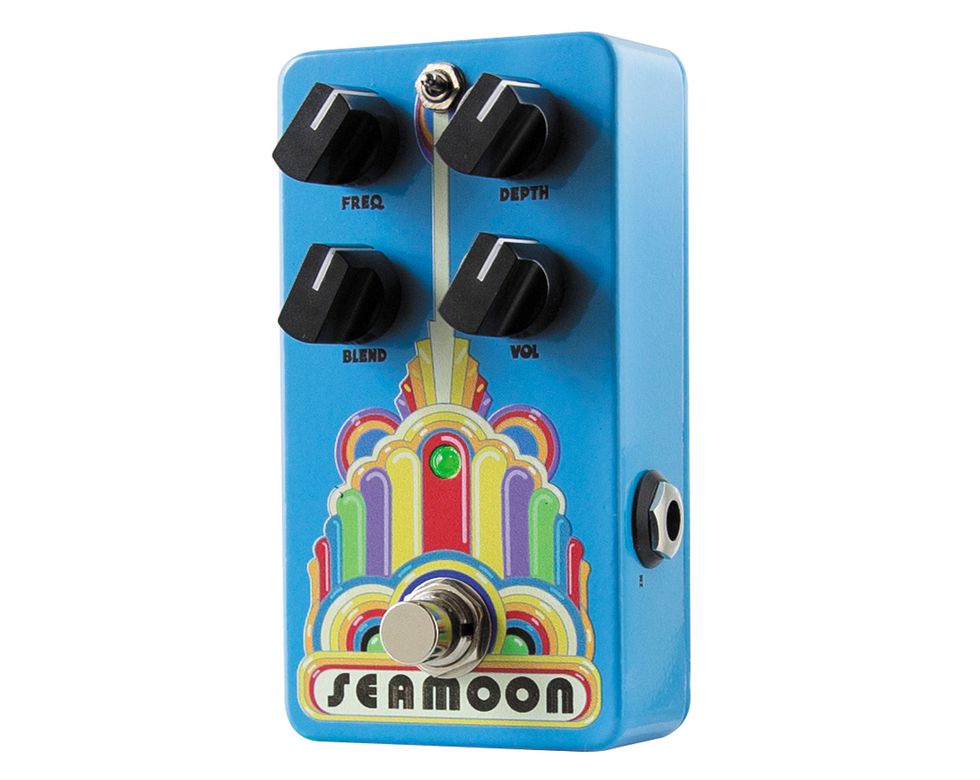Recorded direct using PreSonus FireStudio and PreSonus Studio One 3.
Clip 1: Miles passive short-scale bass - sub-drop setting - frequency maxed, blend maxed, filter off, volume maxed.
Clip 2: Miles passive short-scale bass - wet-drop setting - frequency 11 o’clock, blend noon, filter 2 o’clock, volume 4 o’clock.
Clip 3: ‘75 reissue Fender Jazz - drippy drop setting -frequency noon, blend 1 o’clock, filter 2 o’clock, volume 3 o’clock.
RatingsPros:Great range of tones. Cons: Internal preamp’s trim pot for gain could be a pain to adjust on the fly when using multiple instruments or settings. Street: $199 Seamoon FX Funk Machine seamoonfx.com | Tones: Ease of Use: Build/Design: Value: |
Passion for tone is what brings us all here, and for Neil Jason, that passion has earned yet another title on his resume. Not only has he been a top-call bassist for decades—recording with the likes of Paul McCartney, the Brecker Brothers, Mick Jagger, Cyndi Lauper, and dozens of other heavies—but he’s also been a producer and composer. And now, in a partnership with Ben Fulton of Red Witch, he has started a pedal company called Seamoon FX. The outfit’s first offering is the Funk Machine, which is a reimagining of the original ’70s envelope filter of the same name.
Stuffed Envelope
Out of the box, the Funk Machine is sleek, compact, and easy to navigate, with a few more controls than the original (that was made by a now-gone company, also called Seamoon). This new version boasts a blend and volume control in addition to the frequency and depth controls of the first Funk Machine. There is also a mini toggle to switch the onboard preamp on or off, allowing the pedal to be tailored to a player’s particular instrument.
I plugged in a Fender ’75 reissue Jazz bass for this run-through, as it is the absolute funkiest bass in my arsenal. For another flavor, I also used a short-scale Kohlman Miles bass, which has a more rounded tone than the J. I started with the blend control on the Seamoon at about noon, the volume at 3 o’clock, and adjusted the frequency and filter to my tastes.
This pedal just oozes funk. The wet, drippy sound is really crushing, and the touch sensitivity is an absolute dream. I can chug along with a cool groove, hit it just a little harder to get those nice accent pops happening, and add more of that effect with the depth control. The frequency control is really nice, too. It allows the user to adjust the frequency spectrum in which the pedal will operate, from supersonic-high to subsonic.
In addition to the super-retro and useful vibe of the filter, there are also some other settings built in that can push your tone into new places. One really sweet setting is the “sub drop,” in which I dimed all the controls except the filter, which I set to zero. This setting is the ultimate in subterranean bass and will make dance and reggae records shake. Another great tone is when the filter is barely engaged (about 10 o’clock), which adds just a touch of the watery effect, but also gives the bass a sonic enhancement that’s quite useful.
The Verdict
I was never privy to the original Funk Machine, although I have heard it countless times on recordings. I am happy that it has been revamped in an analog, compact, and flexible package, which comes in at half the price of an original, and with added features. The no-frills, useful approach of the Funk Machine will help you get the funk out in all the right ways and still leave plenty of room on your pedalboard … and in your wallet.













![Rig Rundown: Russian Circles’ Mike Sullivan [2025]](https://www.premierguitar.com/media-library/youtube.jpg?id=62303631&width=1245&height=700&quality=70&coordinates=0%2C0%2C0%2C0)





